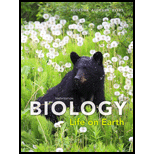
Concept explainers
In chordates, the nerve cord is ________ and runs along the ________ ______ side of the body. During at least one stage of a chordate's life, it has a tail that extends past its _________ and its body is stiffened by a(n) ____________ _________that runs along its length.
To review:
The given blank space in the statement, “in chordates, the nerve cord is ________ and runs along the _______ side of the body. During at least one stage of a chordate’s life, it has a tail that extends past its _________ and its body is stiffened by a(n) ________ that runs along its length.”
Introduction:
The phylum Chordata includes three subphyla, which are vertebrata (Craniata), Cephalochordata (lancelets), and Urochordata (tunicate). All the members of the Chordata show the presence of a notochord, pharyngeal slits, tail, an endostyle, and dorsal-hollow nerve cord at some point of their developmental stage.
Explanation of Solution
A dorsal hollow nerve cord is found in all the chordates, especially in the vertebrates, which is retained throughout their lifetime. It is derived from the ectodermal cells of embryo. All the chordates possess tail beyond their anal region during the embryonic stage of development.
The tail is lost in the humans, which is marked by the coccyx region (tail-bone) of the vertebral column. Like the other members of the chordates, the human embryo contains a tail, which gets absorbed as the development proceeds to the fetal stage.
The notochord is the most district feature of chordates. It is rigid but flexible rod-like structure, which contains large-sized cells whose vacuoles are filled with fluid. A vertebral column replaces the notochord during the later developmental stage in the vertebrates. It gets dissolved during metamorphosis from the larval to the adult stage in the urochordates. The notochord is retailed throughout the lifetime of the cephalochordates.
In chordates, the nerve cord is hollow and runs along the dorsal side of the body. During at least one stage of a chordate’s life, it has a tail that extends past its anus and its body is stiffened by a notochord that runs along its length.
Want to see more full solutions like this?
Chapter 24 Solutions
Biology: Life on Earth
- What symbolic and cultural behaviors are evident in the archaeological record and associated with Neandertals and anatomically modern humans in Europe beginning around 35,000 yBP (during the Upper Paleolithic)?arrow_forwardDescribe three cranial and postcranial features of Neanderthals skeletons that are likely adaptation to the cold climates of Upper Pleistocene Europe and explain how they are adaptations to a cold climate.arrow_forwardBiology Questionarrow_forward
- ✓ Details Draw a protein that is embedded in a membrane (a transmembrane protein), label the lipid bilayer and the protein. Identify the areas of the lipid bilayer that are hydrophobic and hydrophilic. Draw a membrane with two transporters: a proton pump transporter that uses ATP to generate a proton gradient, and a second transporter that moves glucose by secondary active transport (cartoon-like is ok). It will be important to show protons moving in the correct direction, and that the transporter that is powered by secondary active transport is logically related to the proton pump.arrow_forwarddrawing chemical structure of ATP. please draw in and label whats asked. Thank you.arrow_forwardOutline the negative feedback loop that allows us to maintain a healthy water concentration in our blood. You may use diagram if you wisharrow_forward
- Give examples of fat soluble and non-fat soluble hormonesarrow_forwardJust click view full document and register so you can see the whole document. how do i access this. following from the previous question; https://www.bartleby.com/questions-and-answers/hi-hi-with-this-unit-assessment-psy4406-tp4-report-assessment-material-case-stydu-ms-alecia-moore.-o/5e09906a-5101-4297-a8f7-49449b0bb5a7. on Google this image comes up and i have signed/ payed for the service and unable to access the full document. are you able to copy and past to this response. please see the screenshot from google page. unfortunality its not allowing me attch the image can you please show me the mathmetic calculation/ workout for the reult sectionarrow_forwardIn tabular form, differentiate between reversible and irreversible cell injury.arrow_forward
 Biology Today and Tomorrow without Physiology (Mi...BiologyISBN:9781305117396Author:Cecie Starr, Christine Evers, Lisa StarrPublisher:Cengage Learning
Biology Today and Tomorrow without Physiology (Mi...BiologyISBN:9781305117396Author:Cecie Starr, Christine Evers, Lisa StarrPublisher:Cengage Learning Biology 2eBiologyISBN:9781947172517Author:Matthew Douglas, Jung Choi, Mary Ann ClarkPublisher:OpenStax
Biology 2eBiologyISBN:9781947172517Author:Matthew Douglas, Jung Choi, Mary Ann ClarkPublisher:OpenStax Concepts of BiologyBiologyISBN:9781938168116Author:Samantha Fowler, Rebecca Roush, James WisePublisher:OpenStax College
Concepts of BiologyBiologyISBN:9781938168116Author:Samantha Fowler, Rebecca Roush, James WisePublisher:OpenStax College
 Biology (MindTap Course List)BiologyISBN:9781337392938Author:Eldra Solomon, Charles Martin, Diana W. Martin, Linda R. BergPublisher:Cengage Learning
Biology (MindTap Course List)BiologyISBN:9781337392938Author:Eldra Solomon, Charles Martin, Diana W. Martin, Linda R. BergPublisher:Cengage Learning





